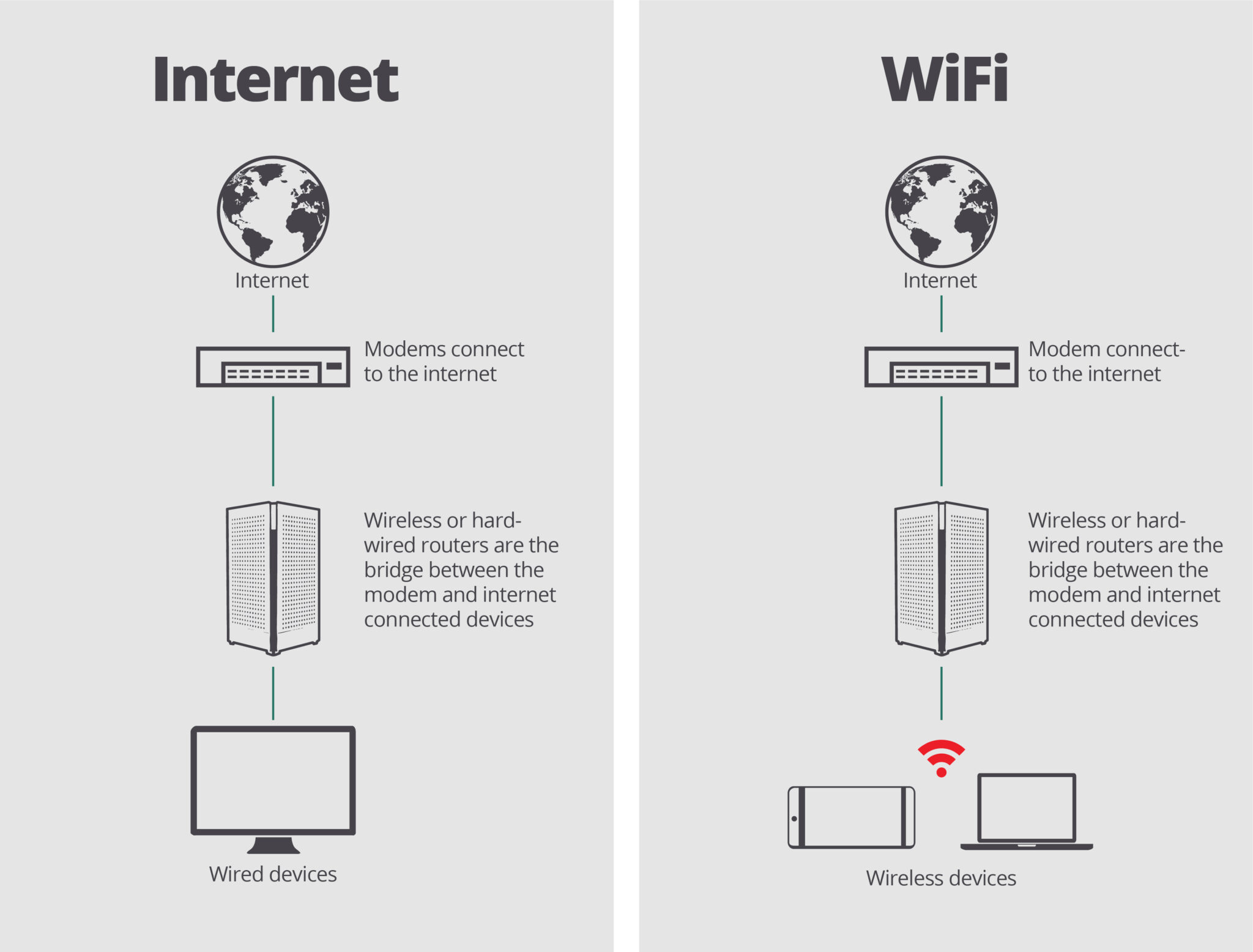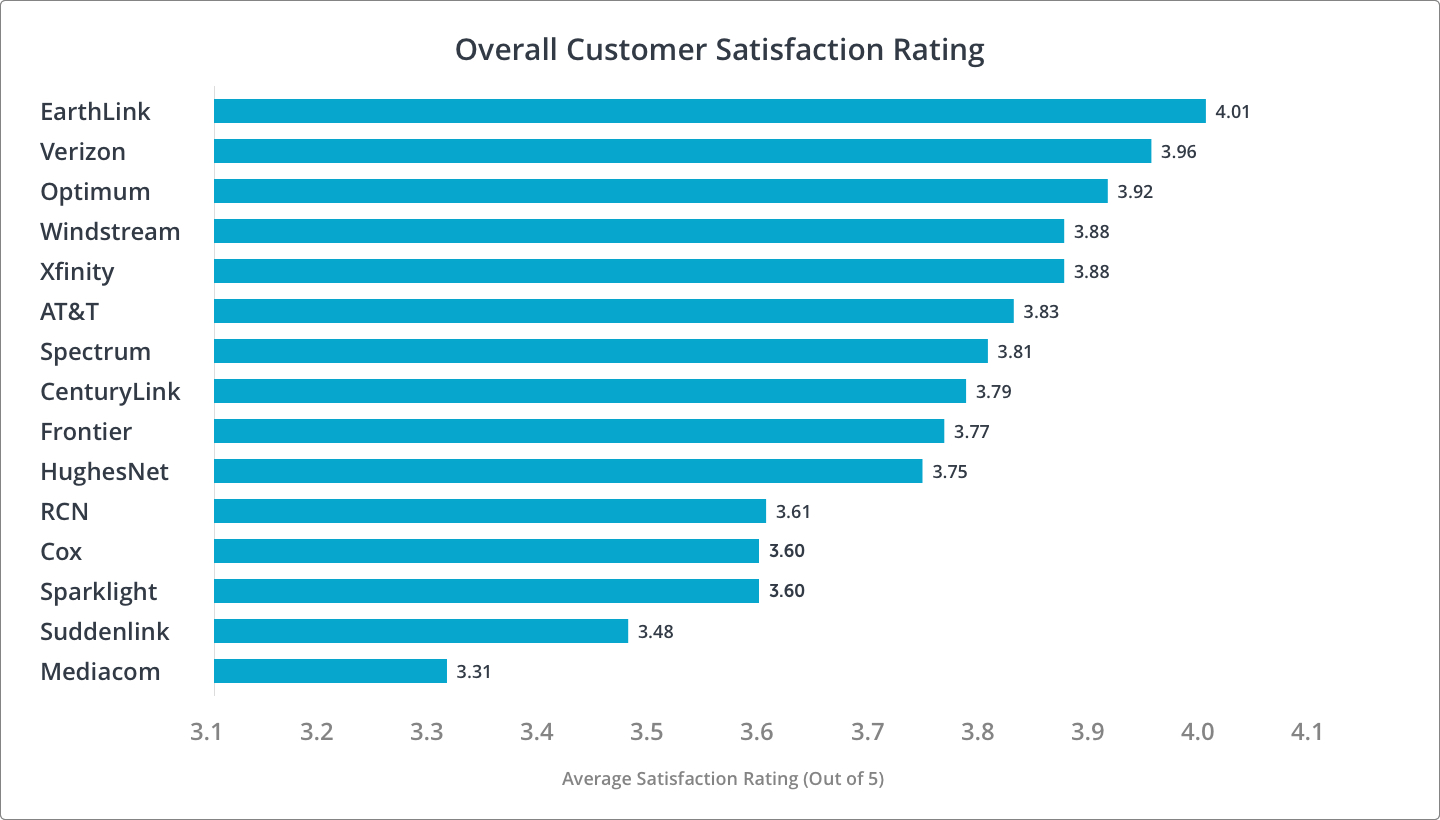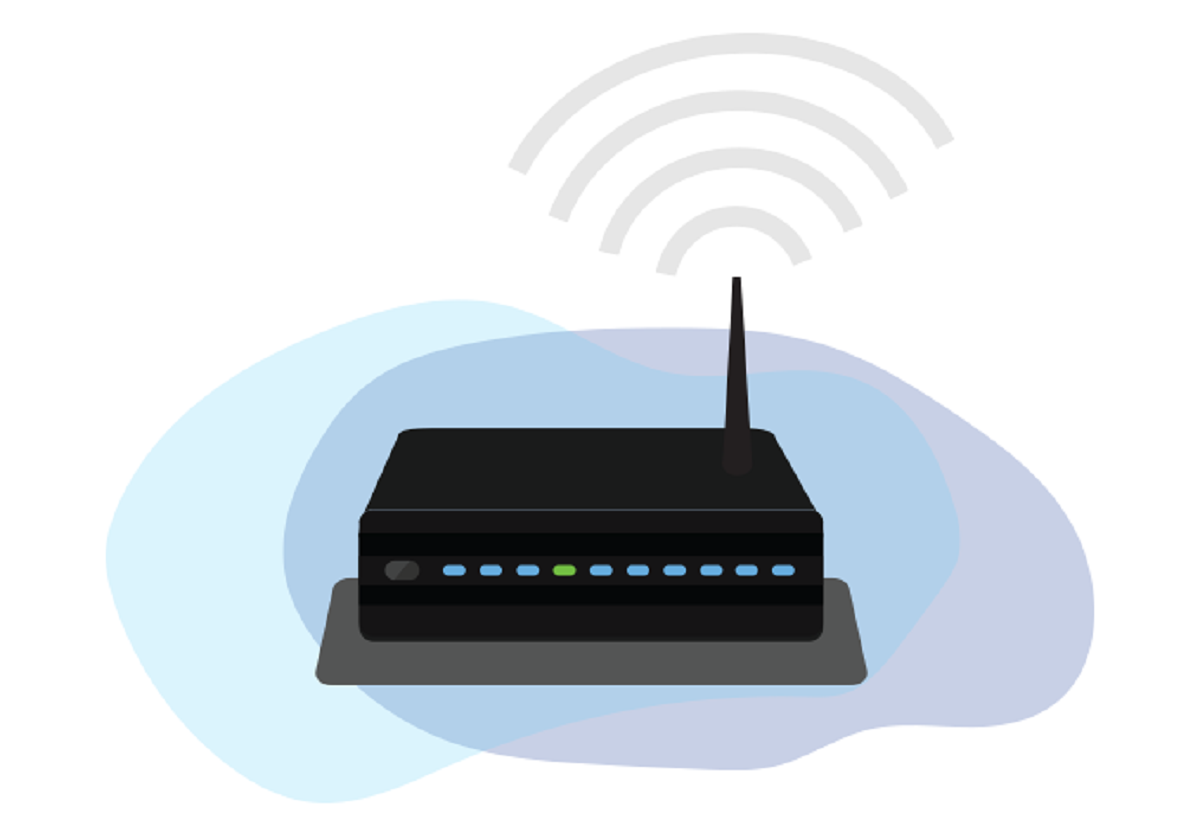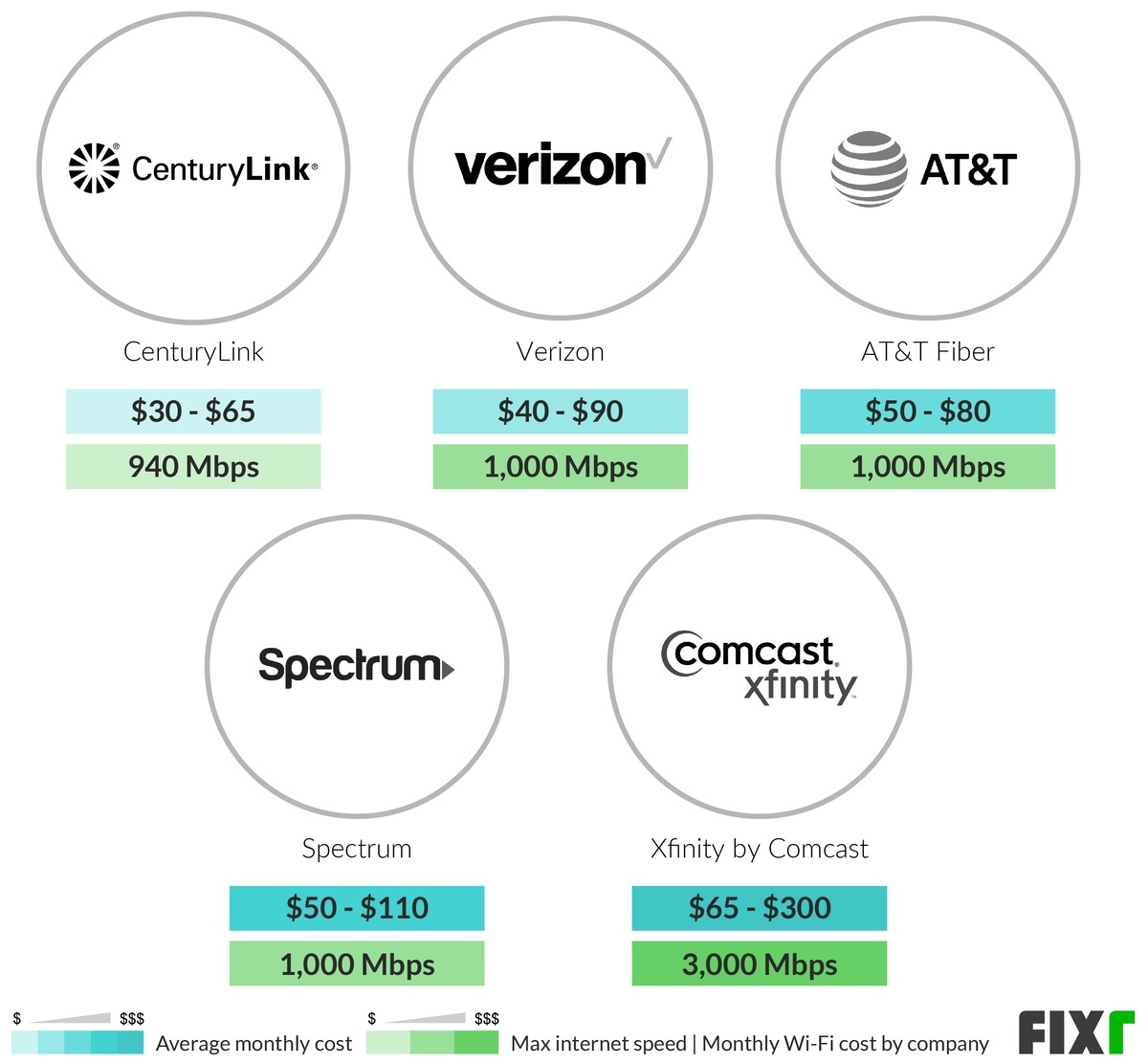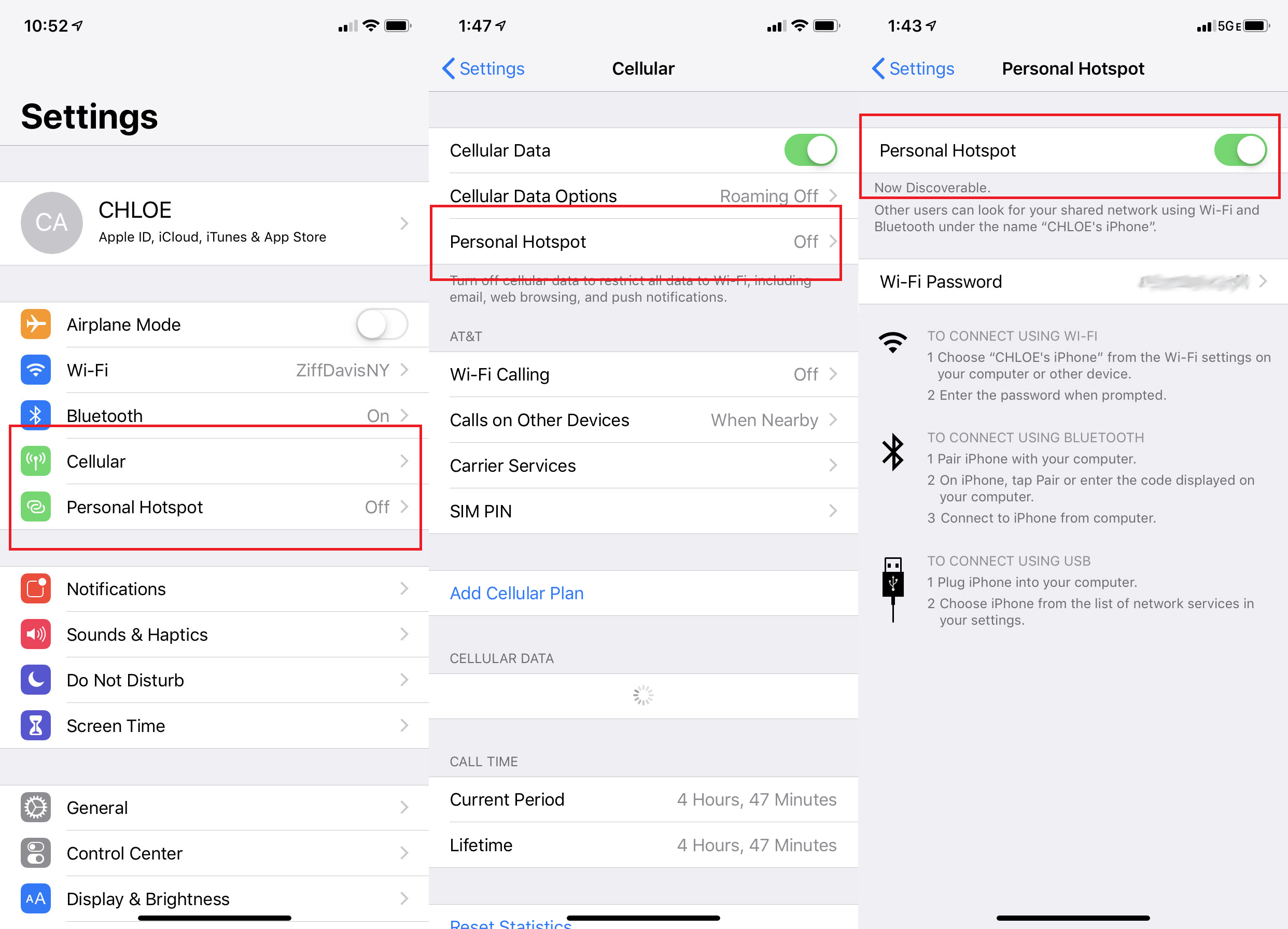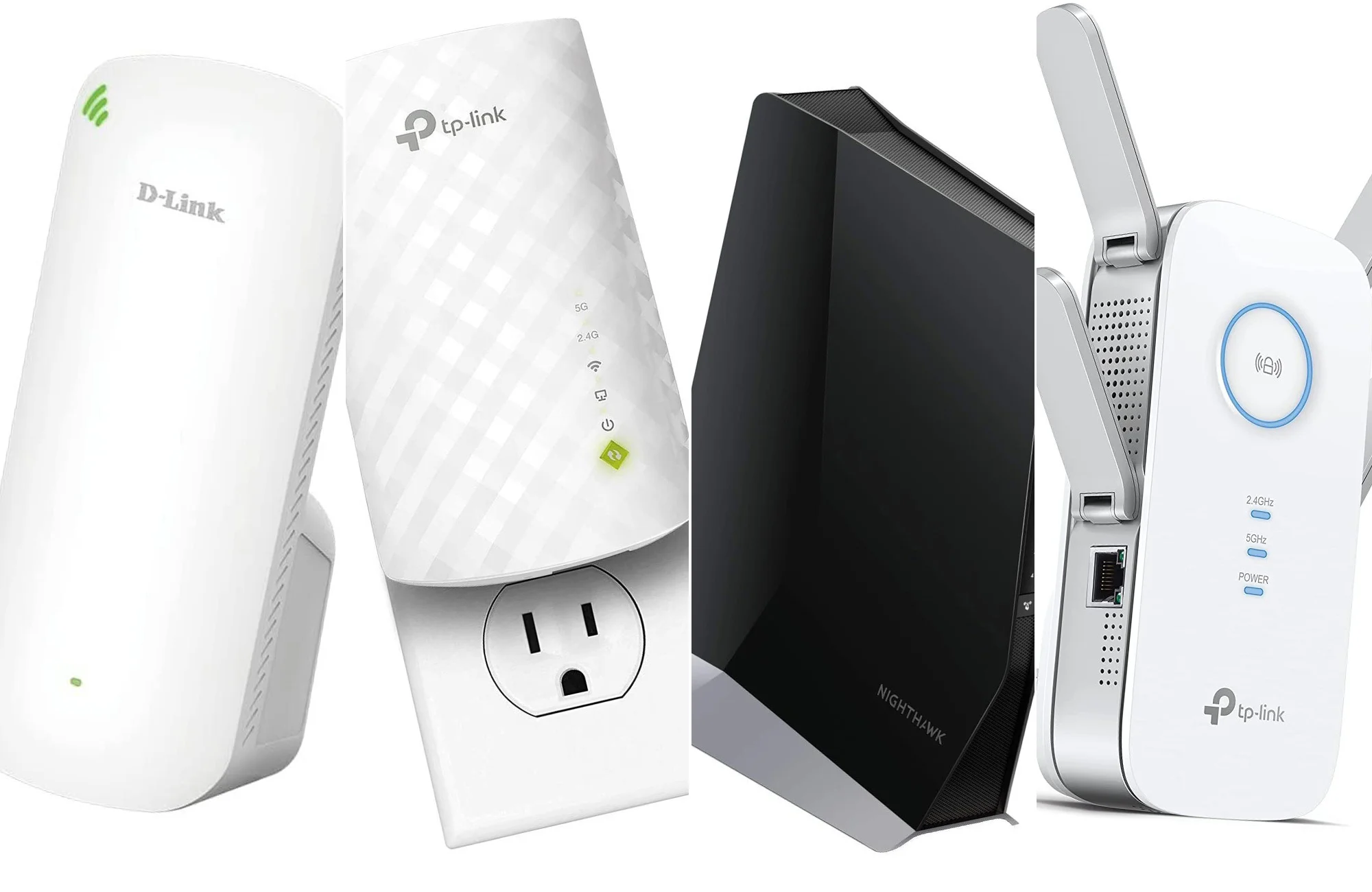Introduction
Welcome to the digital era where technology has become an integral part of our daily lives. In this interconnected world, two terms that often come up in conversations are Wi-Fi and Internet. While these terms are used interchangeably, they are not exactly the same thing. In this article, we will explore the difference between Wi-Fi and the Internet, and how they work together to provide us with seamless connectivity.
Wi-Fi, short for “Wireless Fidelity,” has become a household name, allowing us to connect our smartphones, laptops, and other devices wirelessly to the internet. On the other hand, the Internet is a global network that connects millions of computers, servers, and devices worldwide, enabling communication and information sharing.
Understanding the distinction between Wi-Fi and the Internet is essential, as it can help clarify how our devices connect and access online resources. So, let’s delve deeper into the definitions, functionality, advantages, and limitations of Wi-Fi and the Internet to gain a comprehensive understanding of these terms.
Wi-Fi
Wi-Fi, as mentioned earlier, stands for “Wireless Fidelity.” It is a technology that allows devices to connect to the internet without the need for any physical wired connection. Wi-Fi uses radio waves to transmit data wirelessly between devices and a network router or access point.
The primary purpose of Wi-Fi is to establish a local network connection that enables devices within its range to communicate with each other and access the internet. This technology has revolutionized the way we connect to the internet, providing flexibility and convenience to users.
When using Wi-Fi, a device such as a smartphone or laptop communicates with a Wi-Fi router or access point. The router then connects to the internet service provider (ISP), allowing the device to access the internet. Wi-Fi networks can be found in various settings, such as homes, offices, cafes, and public places, providing internet connectivity to multiple devices simultaneously.
One of the significant advantages of Wi-Fi is its ability to provide wireless internet access within a specific range, often referred to as a “hotspot.” This range depends on factors like the strength of the router and obstacles in the environment. Wi-Fi allows us to connect multiple devices to the same network, making it convenient for households or workplaces with numerous devices.
However, Wi-Fi does have its limitations. The speed and reliability of the connection can be affected by interference from other devices or obstacles such as walls or distance from the router. Additionally, Wi-Fi signals have a limited range, so devices must be within range to access the network.
Definition of Wi-Fi
Wi-Fi, short for “Wireless Fidelity,” is a technology that allows devices to connect to the internet wirelessly. It relies on radio signals to transmit data between devices and a network router or access point.
Wi-Fi networks operate on specific frequency bands, commonly 2.4 GHz or 5 GHz, and use the IEEE 802.11 standard. This standard defines the protocols and specifications for wireless communication, ensuring compatibility between different devices.
Within a Wi-Fi network, devices communicate with each other through the router or access point, which acts as a central hub. The router connects to an internet service provider (ISP), allowing devices to access the internet. It also manages the distribution of network addresses and ensures secure communication between devices.
To connect to a Wi-Fi network, devices need to have a Wi-Fi adapter or network interface card (NIC). Most modern smartphones, laptops, tablets, and smart devices come with built-in Wi-Fi capabilities. These devices can detect available Wi-Fi networks and prompt users to enter a password (if required) to establish a secure connection.
Wi-Fi networks can have different levels of security, such as WEP (Wired Equivalent Privacy), WPA (Wi-Fi Protected Access), or WPA2 (Wi-Fi Protected Access 2). These protocols help protect the network from unauthorized access and ensure the confidentiality and integrity of data transmitted over the network.
It’s important to note that Wi-Fi is not synonymous with the internet. Wi-Fi provides the means to connect devices wirelessly, while the internet refers to the global network of networks that allows information sharing and communication between devices worldwide.
In summary, Wi-Fi is a wireless networking technology that enables devices to connect to the internet without physical wired connections. It uses radio waves, operates on specific frequency bands, and relies on routers or access points to establish communication between devices and the internet.
How Wi-Fi Works
Wi-Fi technology works by utilizing radio waves to establish a wireless connection between devices and a network router or access point. The process involves several steps to ensure secure and reliable communication.
1. Device Detection: When a Wi-Fi-enabled device, such as a smartphone or laptop, is within range of a Wi-Fi network, it detects the available networks in the vicinity. The device lists the network names, also known as SSIDs (Service Set Identifiers), in the Wi-Fi settings.
2. Authentication and Connection: Once the desired Wi-Fi network is selected, the device prompts the user to enter the network password (if required). This password helps ensure that only authorized users can connect to the network. Once the correct password is entered, the device sends an authentication request to the router or access point.
3. Establishing Communication: Once authenticated, the device and the router establish a secure wireless connection. This connection is established using various Wi-Fi protocols defined by the IEEE 802.11 standard, such as 802.11b, 802.11g, or 802.11n. These protocols determine the speed, range, and other features of the Wi-Fi network.
4. IP Address Assignment: After the initial connection is established, the router assigns an IP (Internet Protocol) address to the device. This IP address uniquely identifies the device within the network. It allows the device to send and receive data packets over the internet.
5. Data Transfer: Once connected, the device can send and receive data packets over the Wi-Fi network. These data packets travel through the air using radio waves. The router or access point acts as a central hub, ensuring that data is transmitted to the correct destination within the local network or over the internet.
6. Encryption and Security: Wi-Fi networks can employ different encryption methods, such as WEP, WPA, or WPA2, to protect data transmitted over the network. Encryption ensures that the data is encoded and can only be deciphered by the authorized recipient, keeping it safe from unauthorized access.
By following these steps, Wi-Fi allows devices to communicate wirelessly with each other and access the internet. This technology has revolutionized the way we connect to the digital world, providing convenience, mobility, and flexibility.
Advantages of Wi-Fi
Wi-Fi technology offers numerous advantages that have made it an essential part of our everyday lives. Here are some of the key benefits of using Wi-Fi:
1. Wireless Convenience: The most apparent advantage of Wi-Fi is the freedom from wired connections. With Wi-Fi, you can connect to the internet and access network resources without the need for physical cables. This wireless convenience allows for greater mobility and flexibility in using devices within the Wi-Fi network range.
2. Multiple Device Connectivity: Wi-Fi networks enable multiple devices to connect to the internet simultaneously. Whether you have smartphones, laptops, tablets, or smart devices, Wi-Fi allows you to connect all your devices without the need for separate wired connections. This convenience is especially beneficial in households or workplaces with multiple devices used by different individuals.
3. Easy Network Expansion: Expanding a Wi-Fi network is relatively simple compared to wired network expansions. Additional devices can be connected to the network without the need for extra Ethernet cables or complex configurations. This makes it easier to extend network coverage to new areas or accommodate growing device requirements.
4. Cost-effective: Wi-Fi eliminates the need for extensive wiring infrastructure, making it a cost-effective solution for network connectivity. Wi-Fi networks can be set up with existing internet connections, reducing installation costs compared to wired networks. This affordability has contributed to the widespread adoption of Wi-Fi in homes, businesses, public spaces, and various other settings.
5. Seamless Internet Access: With Wi-Fi, you can enjoy seamless internet access across different devices and locations within the network coverage. Whether you’re in your living room, office, or a coffee shop, Wi-Fi networks provide consistent internet connectivity without the hassle of finding and connecting to wired connections.
6. Guest Network Provision: Many Wi-Fi routers offer a guest network feature, allowing you to create a separate network for visitors or temporary users. This feature ensures that guests can connect to the internet without gaining access to your main network and compromising your security.
7. Flexibility in Network Placement: Wi-Fi routers can be positioned strategically to optimize network coverage and signal strength. This flexibility allows you to place the router in a central location or adjust its placement to minimize obstacles and maximize signal reception. As a result, you can enjoy reliable Wi-Fi connectivity throughout your home or office.
In summary, Wi-Fi technology offers wireless convenience, multiple device connectivity, easy network expansion, cost-effectiveness, seamless internet access, guest network provision, and flexibility in network placement. All these advantages make Wi-Fi an essential technology for connecting devices to the internet and accessing network resources.
Limitations of Wi-Fi
While Wi-Fi technology offers numerous advantages, it also has some limitations that are important to consider. Here are the key limitations of Wi-Fi:
1. Limited Range: Wi-Fi signals have a limited range, typically varying from around 100 to 300 feet indoors and up to several hundred feet outdoors. The range can be affected by physical barriers like walls, furniture, and other obstacles. This limitation means that devices must be within close proximity to the Wi-Fi router or access point to maintain a stable connection.
2. Interference: Wi-Fi signals can suffer from interference from other electronic devices that operate on the same frequency band. Common sources of interference include cordless phones, microwave ovens, Bluetooth devices, and other Wi-Fi networks in the vicinity. Interference can cause signal degradation, resulting in slower internet speeds or intermittent connection issues.
3. Bandwidth Sharing: When multiple devices are connected to a Wi-Fi network, they share the available bandwidth. This means that the more devices connected to the network, the more the bandwidth is divided, potentially impacting internet speeds and overall network performance.
4. Security Challenges: Wi-Fi networks are susceptible to security risks if not properly secured. Wi-Fi signals can be intercepted by nearby devices, compromising the privacy and security of data transmitted over the network. It is crucial to implement strong encryption protocols, secure passwords, and regularly update Wi-Fi hardware and software to mitigate security vulnerabilities.
5. Speed Fluctuations: Wi-Fi speeds can vary depending on factors such as distance from the router, signal strength, interference, and network congestion. This fluctuation in speed can result in inconsistent internet performance, especially in areas with a high number of Wi-Fi users or dense Wi-Fi networks.
6. Power Consumption: Devices connected to Wi-Fi networks consume more power than those using wired connections. The Wi-Fi radio in devices constantly searches for available networks, leading to increased power consumption and reduced battery life, particularly on portable devices like smartphones and tablets.
7. Dependent on Infrastructure: Wi-Fi networks rely on infrastructure like routers and access points, as well as internet service providers. Any issues with the router, access points, or internet connection can significantly impact the availability and performance of the Wi-Fi network.
Despite these limitations, Wi-Fi remains an incredibly popular and convenient method for wireless connectivity. By understanding and addressing these limitations, users can optimize their Wi-Fi experience and overcome potential challenges.
Internet
The Internet is a global network of interconnected computers and devices that allows for the exchange of information and communication across the globe. It is a vast network that connects millions of computers and servers worldwide, enabling the transmission of data, access to websites, and communication through various online platforms.
The Internet operates on a system of interconnected networks known as the Internet Protocol Suite (TCP/IP). This system ensures that data packets are routed efficiently between devices, regardless of their location. The Internet is often referred to as a “network of networks” because it is made up of numerous interconnected networks owned by different organizations, including internet service providers (ISPs), educational institutions, businesses, and governments.
To access the Internet, devices must be connected to a network that has internet connectivity. This can be achieved through various means, including wired connections such as Ethernet cables or, more commonly, wireless connections like Wi-Fi. Once connected, devices can access online resources, including websites, email services, social media platforms, online storage, and more.
The Internet has become an integral part of our daily lives, offering a wide range of services and applications. Some of the key features and advantages of the Internet include:
1. Global Communication: The Internet enables instant communication with people around the world through email, instant messaging, voice and video calls, and social media platforms. It has revolutionized the way we connect and interact with one another, breaking down geographical barriers.
2. Information and Knowledge: The Internet provides an immense repository of information on virtually any topic. Search engines like Google allow users to access a wealth of knowledge, research papers, news articles, and educational resources at their fingertips. This accessibility to information has empowered individuals and facilitated learning on a global scale.
3. E-commerce and Online Shopping: The Internet has transformed the way we shop and conduct business. Online marketplaces and e-commerce platforms allow consumers to purchase products and services from the comfort of their homes. This convenience has expanded market access for businesses and opened up new opportunities for entrepreneurs.
4. Entertainment and Media: The Internet offers a multitude of entertainment options, including streaming platforms for movies, TV shows, music, and online gaming. Users can access a wide variety of content and media at any time, providing endless entertainment possibilities.
5. Collaboration and Productivity: The Internet has revolutionized collaboration and productivity in various fields. Remote work, online collaboration tools, and cloud-based storage and document sharing platforms enable teams to work together efficiently across different locations. This has increased workplace flexibility and productivity.
While the Internet offers numerous advantages, it also has some limitations and challenges, such as concerns about privacy, cybersecurity threats, and the digital divide. It is important to navigate the internet responsibly, safeguard personal information, and ensure equitable access to bridge the digital divide.
In summary, the Internet is a global network that facilitates communication, access to information, e-commerce, entertainment, collaboration, and productivity. It has transformed the way we live, work, and interact with the world, serving as a gateway to endless possibilities and opportunities.
Definition of Internet
The Internet is a vast global network of interconnected computers and devices that enables communication, data exchange, and access to information from virtually anywhere in the world. It is a network of networks that operates using the Internet Protocol Suite (TCP/IP) and facilitates the transmission of data in the form of packets between devices.
At its core, the Internet is a decentralized system, meaning there is no central governing authority controlling its operations. Instead, it relies on a distributed network of servers, routers, and other networking components to ensure data is transmitted efficiently and reliably.
The Internet provides a wide range of services and applications that have revolutionized the way we live, work, communicate, and access information. It encompasses various protocols and technologies, such as the World Wide Web (WWW), email, instant messaging, file sharing, voice and video calling, online gaming, cloud computing, and much more.
Devices that connect to the Internet, such as computers, smartphones, tablets, and IoT (Internet of Things) devices, communicate with each other through a combination of wired and wireless connections. These connections can be established via Ethernet cables, Wi-Fi, cellular networks, or satellite links.
One of the fundamental elements of the Internet is IP addressing. Each device connected to the Internet is assigned a unique IP address, which serves as its online identifier. This enables devices to send and receive data packets to and from specific destinations, ensuring the proper routing and delivery of information.
The Internet has transformed the way we access and share information, conduct business, communicate, and entertain ourselves. It has significantly impacted numerous industries, such as education, healthcare, finance, media, and commerce.
It’s important to note that the Internet is distinct from other terms often used interchangeably, such as the World Wide Web (WWW) or Wi-Fi. While the Internet refers to the global network of interconnected devices, the World Wide Web is a system of information resources accessed through web browsers. Wi-Fi, on the other hand, is a wireless networking technology that enables devices to connect to the Internet without physical wired connections.
In summary, the Internet is a vast global network that connects devices worldwide, allowing for communication, data exchange, and access to information. It encompasses various protocols, services, and applications that have transformed the way we interact with the world and opened up unimaginable possibilities for individuals, businesses, and societies as a whole.
How the Internet Works
The Internet is an intricate system that operates through a combination of networking protocols, infrastructure, and interconnected devices. Understanding how the Internet works is crucial to grasp the underlying mechanisms that enable communication, data transfer, and information access across the globe.
1. Data Transmission and Routing: When a user sends data over the Internet, it is broken down into smaller units called data packets. These packets contain the necessary information, including the source and destination addresses. Utilizing the Internet Protocol (IP), each packet is individually routed through the network based on the most efficient path to reach its destination.
2. Network Infrastructure: The Internet relies on an extensive network infrastructure comprising servers, routers, switches, and data centers. Internet Service Providers (ISPs) are responsible for maintaining this infrastructure and connecting individuals, businesses, and organizations to the Internet. ISPs use high-speed links, such as fiber optic cables, to transmit data across their networks and connect to other ISPs, forming an interconnected web of networks.
3. Domain Name System (DNS): When users want to access a website, they generally type a domain name into their web browser. Behind the scenes, the domain name is translated into an IP address using the Domain Name System (DNS). The DNS acts as a directory, matching domain names to the corresponding IP addresses, allowing users to reach their desired websites.
4. Client-Server Model: The Internet operates on a client-server model. Users connect to the Internet using devices such as computers, smartphones, or tablets, which act as clients. They request information from servers, which are powerful computers that store and process data. Servers respond to the client’s request by transmitting the requested information back to the client’s device.
5. Protocols and Standards: The Internet relies on a set of protocols and standards to ensure seamless communication and data exchange. The TCP/IP (Transmission Control Protocol/Internet Protocol) is the foundation of the Internet and breaks down data into packets for transmission. Other protocols, such as HTTP (Hypertext Transfer Protocol) for web browsing and SMTP (Simple Mail Transfer Protocol) for email, enable specific types of data transfer and communication.
6. Redundancy and Resilience: The Internet is designed to be highly redundant and resilient. There are multiple paths for data packets to travel from source to destination. If one route becomes congested or unavailable, packets can be rerouted dynamically to ensure uninterrupted data transmission. This redundancy and resilience enable the Internet to continue functioning even in the face of network failures or disruptions.
7. Security and Encryption: Security is paramount in the functioning of the Internet. Encryption protocols, such as SSL/TLS (Secure Sockets Layer/Transport Layer Security), ensure the confidentiality and integrity of data transmitted over the Internet. Secure communication channels are established between clients and servers, protecting sensitive information from interception or tampering.
By combining these elements, the Internet enables seamless communication, data exchange, and access to information on a global scale. It has revolutionized the way we live, work, and connect with the world, becoming an indispensable tool in various aspects of our lives.
Advantages of the Internet
The Internet has brought about tremendous benefits and has transformed the way we live, work, and interact. It has revolutionized various aspects of our lives, offering a multitude of advantages. Here are some of the key advantages of the Internet:
1. Access to Information: The Internet provides unparalleled access to vast amounts of information on virtually any subject. Search engines and online databases allow users to quickly find information, research, news, and educational resources. This easy access to information has empowered individuals, expanded knowledge, and facilitated lifelong learning.
2. Communication and Connectivity: The Internet has revolutionized communication, enabling instant and global connectivity. Email, instant messaging, video conferencing, and social media platforms connect people regardless of geographical distances. It allows individuals, businesses, and organizations to collaborate, share ideas, and stay connected with friends, family, colleagues, and customers worldwide.
3. E-commerce and Online Shopping: The Internet has transformed the way we do business and shop. E-commerce platforms and online marketplaces provide a convenient and accessible way to buy and sell products and services. Online shopping allows consumers to browse and purchase items from the comfort of their homes, providing a wider range of options and easy comparison shopping.
4. Entertainment and Media: The Internet offers a plethora of entertainment options. Streaming platforms provide on-demand access to movies, TV shows, music, and online gaming. Social media platforms, content sharing websites, and blogs offer a platform for self-expression, creativity, and entertainment. These digital entertainment options have revolutionized the way we consume and interact with media.
5. Global Accessibility: The Internet has broken down geographical barriers and democratized access to information and resources. It has leveled the playing field, allowing individuals and businesses from anywhere in the world to compete and thrive. This global accessibility has opened up new opportunities, expanded markets, and facilitated cross-cultural exchange.
6. Education and e-Learning: The Internet has transformed education by providing access to online courses, virtual classrooms, educational resources, and interactive learning platforms. It has made education more accessible and flexible, allowing individuals to learn at their own pace and from anywhere in the world. The Internet has also facilitated remote learning, making education possible even in challenging circumstances.
7. Faster and More Efficient Communication: The Internet has significantly improved the speed and efficiency of communication. Instant communication through email, chat services, and video calls enables real-time interaction and collaboration. This capability has streamlined business operations, enhanced productivity, and facilitated quick decision-making.
8. Information Exchange and Collaboration: The Internet enables knowledge sharing, collaboration, and crowd-sourced problem-solving. Online forums, communities, and collaborative platforms allow people to share expertise, seek help, and work together on projects. This information exchange fosters innovation, creativity, and collective intelligence.
In summary, the Internet offers unparalleled access to vast information, facilitates global communication and connectivity, revolutionizes business, provides entertainment options, enhances education, and enables faster and more efficient communication. Its advantages have rewritten the rules of connectivity and transformed numerous aspects of our personal and professional lives.
Limitations of the Internet
While the Internet has brought about numerous advantages and has revolutionized various aspects of our lives, it also has some limitations and challenges. It is important to be aware of these limitations to navigate the online world responsibly and mitigate potential issues. Here are some of the key limitations of the Internet:
1. Information Overload: The Internet provides an overwhelming amount of information, leading to information overload. With the abundance of content available, it can be difficult to discern reliable sources and filter out inaccurate or misleading information. Navigating through the vast sea of data requires critical thinking and careful evaluation of sources.
2. Security and Privacy Concerns: The Internet presents numerous security and privacy risks. Phishing, hacking, identity theft, and malware attacks are prevalent threats. Users must exercise caution while sharing personal information online, using secure passwords and encryption measures, and being vigilant against phishing attempts and online scams.
3. Digital Divide: The digital divide refers to the unequal access to the Internet and the technological gap between different regions and socioeconomic groups. Inadequate infrastructure, limited resources, and disparities in education hinder equitable access to the Internet. Bridging the digital divide is essential to ensure equal opportunities for all in the digital age.
4. Dependence on Infrastructure: The Internet relies on a complex infrastructure, including servers, routers, data centers, and cables. Any disruption or failure in this infrastructure can result in service outages, impacting connectivity and access to online resources. Dependence on physical infrastructure makes the Internet susceptible to disruptions caused by natural disasters or cyberattacks.
5. Information Censorship and Control: Some governments and organizations exercise control over internet access and content, limiting freedom of expression and access to information. Internet censorship and restrictions on online activities can hinder free speech, impede access to knowledge, and undermine digital rights.
6. Digital Addiction and Overconsumption: The Internet offers a myriad of entertainment options and can be addictive. Spending excessive time online can lead to a sedentary lifestyle, social isolation, and neglect of real-world interactions. It is essential to use the Internet mindfully and strike a balance between online and offline activities.
7. Online Harassment and Cyberbullying: The anonymity provided by the Internet can facilitate harassment, cyberbullying, and online abuse. These issues can negatively impact mental health, personal well-being, and the overall online experience. Addressing these challenges requires creating safe online environments, promoting digital ethics, and fostering a culture of respect and empathy.
8. Reliability and Accuracy of Online Information: Not all information available on the Internet is accurate and reliable. Misinformation, fake news, and biased content exist and can spread rapidly. Verifying information, fact-checking, and relying on reputable sources are crucial to ensure access to reliable information.
Despite these limitations, the Internet remains an essential part of our lives. It offers tremendous opportunities, but it is necessary to approach it with caution, critical thinking, and responsible usage.
Difference between Wi-Fi and Internet
While the terms Wi-Fi and Internet are often used interchangeably, they refer to different aspects of our digital connectivity. Understanding the difference between Wi-Fi and the Internet is essential to accurately comprehend how our devices connect and access online resources. Here are the key distinctions between Wi-Fi and the Internet:
1. Definition: Wi-Fi, short for “Wireless Fidelity,” is a wireless networking technology that allows devices to connect to a local network and access the Internet without the need for physical wired connections. On the other hand, the Internet is a global network of interconnected computers and devices that enables communication, data exchange, and access to online resources.
2. Functionality: Wi-Fi provides the means for devices to connect wirelessly to a network, while the Internet provides the infrastructure for devices to communicate and access online information and services. Wi-Fi is a technology that enables local network connectivity, whereas the Internet is the global system that allows devices to connect across networks worldwide.
3. Wireless Connectivity: Wi-Fi enables wireless connectivity within a specific range, typically within a home, office, or public space. It allows devices within the range to communicate with each other and access the Internet. On the other hand, the Internet is not limited by physical proximity but rather connects devices across the globe, providing a vast network for information exchange and communication.
4. Accessing Data: Wi-Fi allows devices to connect to a network and access data from local resources and the internet. It provides a wireless connection to the network, but devices must still connect to the Internet through an Internet Service Provider (ISP) to access online resources. The Internet, on the other hand, enables devices to access data and information from servers and websites around the world.
5. Dependency: Wi-Fi connectivity depends on the presence of a local network and a Wi-Fi router or access point. Without a Wi-Fi network, devices cannot connect and access the Internet wirelessly. The Internet, however, is independent of Wi-Fi and can be accessed through other means such as wired connections, cellular networks, or satellite links.
6. Coverage Area: Wi-Fi networks have limited coverage areas based on the range of the router or access point. The coverage area can be extended using Wi-Fi extenders or mesh networks but is still limited to a specific range. In contrast, the Internet has a global reach, connecting devices across different geographical locations and networks.
7. Accessibility: Wi-Fi networks may require passwords or authentication to access, providing a level of security for the local network. In contrast, the Internet is accessible to anyone with an active connection and does not require authentication to use most online services.
In summary, Wi-Fi is a wireless networking technology that allows devices to connect to a local network and access the Internet wirelessly. The Internet, on the other hand, is the global network that connects devices across the world, enabling communication, data transfer, and access to online resources. Wi-Fi provides the means for devices to connect wirelessly within a limited range, while the Internet ensures connectivity and accessibility on a global scale.
Conclusion
In today’s interconnected world, understanding the difference between Wi-Fi and the Internet is crucial for a comprehensive grasp of our digital connectivity. Wi-Fi, or Wireless Fidelity, is a wireless networking technology that allows devices to connect to a local network without the need for physical wired connections. It provides wireless convenience, multiple device connectivity, and flexibility within a limited range. On the other hand, the Internet is a global network of interconnected computers and devices that enables communication, data exchange, and access to online resources. It operates on a system of interconnected networks, providing global connectivity and access to vast amounts of information.
While Wi-Fi and the Internet are intimately connected, they serve different purposes. Wi-Fi facilitates local network connectivity and provides wireless access to the Internet within a limited range, while the Internet serves as the underlying infrastructure that connects devices globally and enables worldwide communication and data transmission.
The advantages of Wi-Fi include wireless convenience, multiple device connectivity, easy network expansion, cost-effectiveness, and seamless internet access. However, it also has limitations, such as limited range, interference, and security challenges.
The Internet brings numerous advantages, including access to vast information, communication and global connectivity, e-commerce and online shopping, entertainment options, education opportunities, and faster communication. Nonetheless, it also poses limitations, such as information overload, security and privacy concerns, the digital divide, and dependence on infrastructure.
In conclusion, Wi-Fi and the Internet are integral components of our digital lives. Wi-Fi provides the means for wireless connectivity within a limited network range, while the Internet forms the global infrastructure that enables communication, data exchange, and access to online resources worldwide. Understanding the difference between Wi-Fi and the Internet enables us to make informed decisions, maximize the benefits of connectivity, and navigate the digital landscape effectively.







